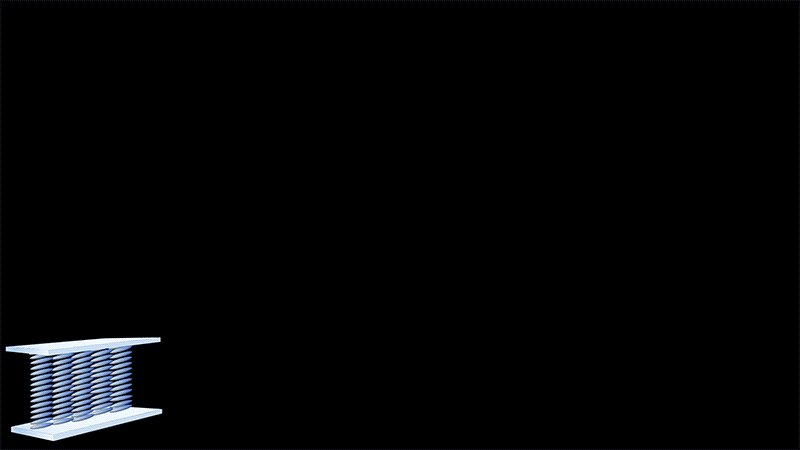At this point, you’ve probably seen hundreds of videos of Ukrainian suicide drones diving towards the Russian armoured…
HBO’s The Last Of Us Has Already Won Eight Emmy Awards

The 75th Emmy Awards will be broadcast live on January 15, and that’s where a majority of the awards winners will be announced. However, the Creative Arts Emmy awards, a subset of of the Emmys that recognizes technical achievements, guest appearances, and more, have already been doled out, and HBO’s The Last of Us picked up eight wins, as reported by Deadline. In total, the show, its crew, and actors have picked up 24 nominations.
[embedded content]
Here are the eight Creative Arts Emmys The Last of Us has already won:
- Outstanding special visual effects in a season or movie
- Outstanding main title design
- Outstanding sound editing for a comedy or drama series (one hour) and animation
- Outstanding sound mixing for a comedy or drama series (one hour)
- Outstanding picture editing for a drama series
- Outstanding guest actress in a drama series – Storm Reid as Riley Abel
- Outstanding guest actor in a drama series – Nick Offerman as Bill
The Last of Us‘ Joel and Ellie – Pedro Pascal and Bella Ramsey, respectively – are still up for Emmy awards. Pascal has been nominated for “Outstanding Lead Actor In A Drama Series” and Ramsey “Outstanding Lead Actress In A Drama Series,” and we’ll find out if they’ve won when the 75th Emmy Awards air next week on January 15.
The Last of Us began airing on HBO back in January of last year. Its premiere was the streamer’s second largest debut since 2010, and its second episode broke records, too, before its third episode – “Long, Long Time” – made all of us cry as we watched the love between Bill and Frank flourish in the apocalypse. “Long, Long Time” is the episode that won Offerman an Emmy this year.
[embedded content]
HBO quickly greenlit a second season of The Last of Us and it’s set to premiere in 2025. It will adapt, partly, the second game in the series, The Last of Us Part II, which gives players plenty of time to check out the upcoming The Last of Us Part II Remastered. It hits PlayStation 5 exclusively on January 19.
For more, read Game Informer’s review of The Last of Us and then read Game Informer’s review of the The Last of Us Part II.
[Source: Deadline]
What’s your favorite episode of The Last of Us? Let us know in the comments below!
Innovation Crossroads Puts a Charge in Battery Startup, Accelerating Path from Lab to Market – Technology Org
After several years starting a company to produce a unique solvent-free battery component for manufacturing, Rajan Kumar joined…
Biometric Security in Self-Storage: Future Trends and User Experience – Technology Org
The realm of self-storage is undergoing a groundbreaking transformation with the integration of biometric security technologies. This innovative…
Not-at-Fault Car Hire Essentials in Australia – Technology Org
Car accidents are unfortunate events that can disrupt our lives, leaving us grappling with the aftermath. When you…
Box Culverts 101: Everything You Need to Know for a Successful Project – Technology Org
These culverts are essential to civil engineering and infrastructure projects, playing a crucial role in the efficient conveyance…
Strategies for Successful Time Management – Technology Org
In today’s fast-paced world, where demands on our time seem endless, mastering the art of keeping track of…
McAfee unveils AI-powered deepfake audio detection
McAfee has revealed a pioneering AI-powered deepfake audio detection technology, Project Mockingbird, during CES 2024. This proprietary technology aims to defend consumers against the rising menace of cybercriminals employing fabricated, AI-generated audio for scams, cyberbullying, and manipulation of public figures’ images. Generative AI tools have enabled…
Stripes in a flowing liquid crystal suggest a route to “chiral” fluids
Hold your hands out in front of you, and no matter how you rotate them, it’s impossible to superimpose one over the other. Our hands are a perfect example of chirality — a geometric configuration by which an object cannot be superimposed onto its mirror image.
Chirality is everywhere in nature, from our hands to the arrangement of our internal organs to the spiral structure of DNA. Chiral molecules and materials have been the key to many drug therapies, optical devices, and functional metamaterials. Scientists have until now assumed that chirality begets chirality — that is, chiral structures emerge from chiral forces and building blocks. But that assumption may need some retuning.
MIT engineers recently discovered that chirality can also emerge in an entirely nonchiral material, and through nonchiral means. In a study appearing today in Nature Communications, the team reports observing chirality in a liquid crystal — a material that flows like a liquid and has non ordered, crystal-like microstructure like a solid. They found that when the fluid flows slowly, its normally nonchiral microstructures spontaneously assemble into large, twisted, chiral structures. The effect is as if a conveyor belt of crayons, all symmetrically aligned, were to suddenly rearrange into large, spiral patterns once the belt reaches a certain speed.

Credit: Courtesy of the researchers
The geometric transformation is unexpected, given that the liquid crystal is naturally nonchiral, or “achiral.” The team’s study thus opens a new path to generating chiral structures. The researchers envision that the structures, once formed, could serve as spiral scaffolds in which to assemble intricate molecular structures. The chiral liquid crystals could also be used as optical sensors, as their structural transformation would change the way they interact with light.
“This is exciting, because this gives us an easy way to structure these kinds of fluids,” says study co-author Irmgard Bischofberger, associate professor of mechanical engineering at MIT. “And from a fundamental level, this is a new way in which chirality can emerge.”
The study’s co-authors include lead author Qing Zhang PhD ’22, Weiqiang Wang and Rui Zhang of Hong Kong University of Science and Technology, and Shuang Zhou of the University of Massachusetts at Amherst.
Striking stripes
A liquid crystal is a phase of matter that embodies properties of both a liquid and a solid. Such in-between materials flow like liquid, and are molecularly structured like solids. Liquid crystals are used as the main element in pixels that make up LCD displays, as the symmetric alignment of their molecules can be uniformly switched with voltage to collectively create high-resolution images.
Bischofberger’s group at MIT studies how fluids and soft materials spontaneously form patterns in nature and in the lab. The team seeks to understand the mechanics underlying fluid transformations, which could be used to create new, reconfigurable materials.
In their new study, the researchers focused on a special type of nematic liquid crystal — a water-based fluid that contains microscopic, rod-like molecular structures. The rods normally align in the same direction throughout the fluid. Zhang was initially curious how the fluid would behave under various flow conditions.
“I tried this experiment for the first time at home, in 2020,” Zhang recalls. “I had samples of the fluid, and a small microscope, and one day I just set it to a low flow. When I came back, I saw this really striking pattern.”
She and her colleagues repeated her initial experiments in the lab. They fabricated a microfluidic channel out of two glass slides, separated by a very thin space, and connected to a main reservoir. The team slowly pumped samples of the liquid crystal through the reservoir and into the space between the plates, then took microscopy images of fluid as it flowed through.
Like Zhang’s initial experiments, the team observed an unexpected transformation: The normally uniform fluid began to form tiger-like stripes as it slowly moved through the channel.
“It was surprising that it formed any structure, but even more surprising once we actually knew what type of structure it formed,” Bischofberger says. “That’s where chirality comes in.”
Twist and flow
The team discovered that the fluid’s stripes were unexpectedly chiral, by using various optical and modeling techniques to effectively retrace the fluid’s flow. They observed that, when unmoving, the fluid’s microscopic rods are normally aligned in near-perfect formation. When the fluid is pumped through the channel quickly, the rods are in complete disarray. But at a slower, in-between flow, the structures start to wiggle, then progressively twist like tiny propellers, each one turning slightly more than the next.
If the fluid continues its slow flow, the twisting crystals assemble into large spiral structures that appear as stripes under the microscope.
“There’s this magic region, where if you just gently make them flow, they form these large spiral structures,” Zhang says.
The researchers modeled the fluid’s dynamics and found that the large spiral patterns emerged when the fluid arrived at a balance between two forces: viscosity and elasticity. Viscosity describes how easily a material flows, while elasticity is essentially how likely a material is to deform (for instance, how easily the fluid’s rods wiggle and twist).
“When these two forces are about the same, that’s when we see these spiral structures,” Bischofberger explains. “It’s kind of amazing that individual structures, on the order of nanometers, can assemble into much larger, millimeter-scale structures that are very ordered, just by pushing them a little bit out of equilibrium.”
The team realized that the twisted assemblages have a chiral geometry: If a mirror image was made of one spiral, it would not be possible to superimpose it over the original, no matter how the spirals were rearranged. The fact that the chiral spirals emerged from a nonchiral material, and through nonchiral means, is a first and points to a relatively simple way to engineer structured fluids.
“The results are indeed surprising and intriguing,” says Giuliano Zanchetta, associate professor at the University of Milan, who was not involved with the study. “It would be interesting to explore the boundaries of this phenomenon. I would see the reported chiral patterns as a promising way to periodically modulate optical properties at the microscale.”
“We now have some knobs to tune this structure,” Bischofberger says. “This might give us a new optical sensor that interacts with light in certain ways. It could also be used as scaffolds to grow and transport molecules for drug delivery. We’re excited to explore this whole new phase space.”
This research was supported, in part, by the U.S. National Science Foundation.
Sappers Had to Collect Kinzhal’s Warhead from Ukraine’s Capital – Technology Org
The Kh-47M2 Kinzhal is one of the newer ballistic missiles in the Russian arsenal. It entered service in…
